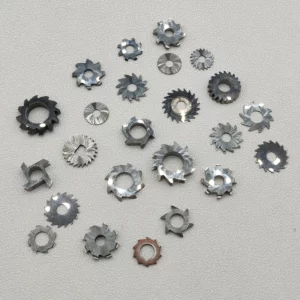İçindekiler
DeğiştirCarbide Tipped Circular Saw Blade
When it comes to woodworking, construction, or various DIY projects, having the right tools can make all the difference. One of the essential tools in any woodworker’s arsenal is the circular saw, and the blade you choose can significantly impact the quality of your cuts. Among various options, the carbide tipped circular saw blade stands out as an excellent choice due to its durability, efficiency, and versatility. This article will guide you through selecting the best carbide tipped circular saw blade for your projects, emphasizing product benefits and application areas that are crucial for buyers.
## Understanding Carbide Tipped Circular Saw Blades
Before diving into the selection process, it’s essential to understand what makes carbide tipped circular saw blades unique. Unlike standard steel blades, carbide tipped blades feature tips made from tungsten carbide, a hard material that allows for sharper, longer-lasting edges. This means less frequent sharpening and replacement, providing substantial cost savings over time.
For example, if you’re working on a large flooring project, using a carbide tipped circular saw blade allows you to make clean, precise cuts without worrying about the blade dulling in the middle of your work. Its resistance to wear and tear means you can maintain productivity throughout your project.
## Factors to Consider When Choosing a Carbide Tipped Circular Saw Blade
To select the best carbide tipped circular saw blade, consider the following factors:
### 1. Type of Material
The material you’ll be cutting is paramount when choosing a blade. For instance, hardwood requires a different blade than softwood. A good rule of thumb is to select a blade that suits the material’s density.
For cutting hardwood, like oak or maple, look for a carbide tipped circular saw blade with a high tooth count. More teeth will provide smoother cuts and finer finishes. Conversely, if you’re working with softwood, such as pine, opting for a blade with fewer teeth will increase the speed of your cuts while maintaining acceptable quality.
### 2. Tooth Configuration
Tooth configuration affects the type of cut your blade produces. Blades typically come with different tooth shapes like flat-topped, hollow, or alternating. Flat-topped teeth are excellent for ripping, while hollow ground teeth can provide finer cuts for cross-cutting applications.
For example, if you are planning to create furniture that requires intricate crosscuts, a carbide tipped circular saw blade with an alternating tooth configuration will yield the clean edges you need. In contrast, for framing or rough cuts, a more aggressive tooth configuration that clears material quickly may be ideal.
### 3. Blade Size
Blade size is another crucial factor. Circular saw blades come in various diameters, and choosing the right size impacts your saw’s ability to cut through different thicknesses of material.
For instance, if you are working on beams or thick sheets of plywood, a larger blade, such as a 7 1/4-inch carbide tipped circular saw blade, can provide the required cutting depth. However, if you’re doing more detailed work, like trimming or making complex cuts, a smaller blade might offer more control.
### 4. Kerf Width
Kerf refers to the thickness of the cut made by the blade. A thinner kerf blade removes less material and requires less power from your saw, which can lead to cleaner cuts. A thicker kerf, while removing more material, can be more durable for heavy-duty cuts.
If you are building furniture, where precise dimensions are crucial, using a thin kerf carbide tipped circular saw blade will help you achieve that accuracy without sacrificing quality. For general framing work, a standard kerf width would suffice.
### 5. Mounting and Compatibility
Lastly, ensure the blade’s arbor size matches your saw’s requirements. A carbide tipped circular saw blade that doesn’t fit properly can lead to unsafe and inefficient cutting. Most blades come with either a 5/8-inch or a 1-inch arbor, so check your saw specifications before purchasing.
##Practical Example
Imagine you are working on a home renovation and need to cut various types of wood for cabinets. You might start with a thinner kerf carbide tipped circular saw blade to achieve accurate cuts for the visible cabinet fronts, ensuring quality and minimizing waste. As you move to frame the cabinets, you could switch to a thicker blade to speed up the process without worrying about precision as much.
## Additional Considerations and Maintenance
Beyond selecting the right carbide tipped circular saw blade, maintaining it is equally important. Regularly clean the blade to remove resin buildup, check for any dull spots, and attend to any necessary sharpening. Many carbide tipped blades can withstand sharpening several times without significant loss of performance, making them a worthwhile investment in the long term.
Choosing the best carbide tipped circular saw blade for your projects involves careful consideration of your specific needs and the materials you’ll be cutting. By understanding factors such as tooth configuration, material type, blade size, kerf width, and compatibility with your saw, you can make an informed decision that not only enhances the quality of your work but also ensures efficiency.
The durability and versatility of a carbide tipped circular saw blade make it an indispensable tool for anyone serious about woodworking or construction. With the right blade in hand, you can bring your projects to life with precision and ease, making every cut count. Always remember, investing in high-quality tools pays off in the quality of your work and the satisfaction of your projects. So, whether you’re a professional carpenter or a weekend DIY enthusiast, don’t overlook the significance of choosing the right carbide tipped circular saw blade.
